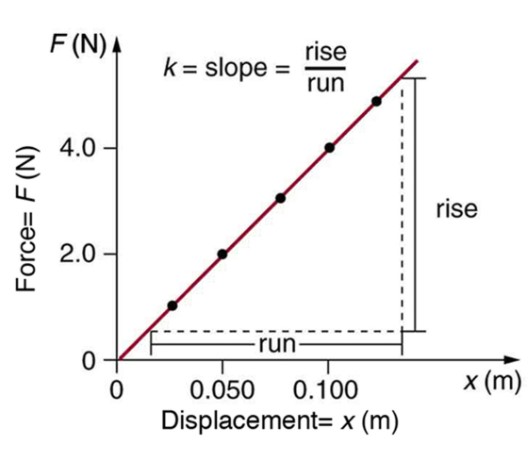Centripetal Acceleration
Learning Objectives
1. Be able to recognize and calculate the centripetal acceleration for objects moving in a circular path.
| Key Terms | Definition | Units | Symbol and Equation |
| Centripetal Acceleration | The force needed to needed to stretch or compress a spring to any displacement is the product of that displacement (x) and a spring constant (k) | \(\text{m/s}^2\) | \(a_c = \frac{v^2}{r}\) |
| Tangential Velocity | The linear speed of an object moving along a circular path. It is directed tangent to the circle at the object’s position. | \(\text{m/s}\) | \(v = \frac{2 \pi r}{T}\) |
| Period | The time it take to complete one cycle. In circular motion it is the time required to make one complete revolution. | Seconds | T |
Tangential Velocity
Hooke’s Law is an equation, F=-kx, that tells us the force that a spring will produce based on how far that spring is stretched or compressed. The farther a spring is displaced from its natural length, the more force it will produce. The force always tries to return the object to an its equilibrium position and is called a restoring force. The k stands for spring constant, and describes the strength in newtons per meter of the spring. If the spring constant is 10 N/m, then it takes 10 newtons of force to stretch the spring 1 meter in length.
F = -kx
F is the spring force in newtons (N).
k is the spring constant, measured in Newtons/meter.
x is the displacement from the springs natural length.
Force Displacement Graph
The slope of a force displacement graph is the spring constant. For example the spring constant of the graph to the right would be 40 N/m. If the force displacement graph is not linear then the spring is not ideal and we can not use Hooke’s Law. Most springs have an elastic range where Hooke’s Law applies, but if they are stretched too far, they become permanently deformed.


